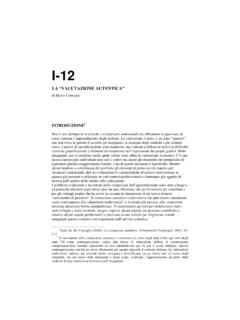Transcription of Humira - European Medicines Agency
1 30 Churchill Place Canary Wharf London E14 5EU United Kingdom An Agency of the European Union Telephone +44 (0)20 3660 6000 Facsimile +44 (0)20 3660 5555 Send a question via our website European Medicines Agency , 2017. Reproduction is authorised provided the source is acknowledged. EMA/518634/2017 EMEA/H/C/000481 EPAR summary for the public Humira adalimumab This is a summary of the European public assessment report (EPAR) for Humira . It explains how the Agency assessed the medicine to recommend its authorisation in the EU and its conditions of use. It is not intended to provide practical advice on how to use Humira . For practical information about using Humira , patients should read the package leaflet or contact their doctor or pharmacist.
2 What is Humira and what is it used for? Humira is a medicine that acts on the immune system and is used to treat the following conditions: plaque psoriasis, a disease causing red, scaly patches on the skin psoriatic arthritis (red, scaly patches on the skin with inflammation of the joints) rheumatoid arthritis (a disease causing inflammation of the joints) axial spondyloarthritis (inflammation of spine causing back pain), including ankylosing spondylitis and when X-ray does not show disease but there are clear signs of inflammation Crohn s disease (a disease causing inflammation of the gut) ulcerative colitis (a disease causing inflammation and ulcers in the lining of the gut)
3 Polyarticular juvenile idiopathic arthritis and active enthesitis-related arthritis (both rare diseases causing inflammation in the joints) hidradenitis suppurativa (acne inversa), a chronic skin disease that causes lumps, abscesses (collections of pus) and scarring on the skin non-infectious uveitis (inflammation of the layer beneath the white of the eyeball). Humira EMA/518634/2017 Page 2/4 Humira is mostly used in adults when their conditions are severe, moderately severe or getting worse, or when patients cannot use other treatments. For detailed information on the use of Humira in all conditions, including when it can be used in children, see the summary of product characteristics.
4 Humira contains the active substance adalimumab. How is Humira used? Humira is given as an injection under the skin, usually every 2 weeks. The dose and frequency of injection depends on the condition to be treated and the dose for a child is calculated according to the child s weight and height. Treatment with Humira must be started and supervised by a doctor who has experience in the treatment of the diseases that Humira is used for. Doctors treating uveitis should also take advice from doctors who have experience of using Humira . Humira can only be obtained by prescription. For further information, see the package leaflet. How does Humira work? The active substance in Humira , adalimumab, is a monoclonal antibody (a type of protein) that has been designed to recognise and attach to a substance in the body called tumour necrosis factor (TNF).
5 This substance is involved in causing inflammation and is found at high levels in patients with the diseases that Humira is used to treat. By attaching to TNF, adalimumab blocks its activity, thereby reducing inflammation and other symptoms of the diseases. What benefits of Humira have been shown in studies? More than twenty main studies involving over 9,500 patients have looked at the effects of Humira in reducing symptoms of inflammatory conditions. The studies included adult patients for the most part, but included children in studies for Crohn s disease, plaque psoriasis, polyarticular juvenile idiopathic arthritis, non-infectious anterior uveitis and enthesitis-related arthritis.
6 Humira , when used as directed, has been shown in clinical trials to be effective at reducing important symptoms of each of the conditions for which it is approved. Below is a brief description of the studies and their results: In studies in adults and children with plaque psoriasis, including psoriasis of the nail, a higher proportion of patients receiving Humira had improvements in symptoms compared with patients receiving methotrexate or placebo (a dummy treatment). Humira also produced a greater improvement in symptoms than placebo in studies of psoriatic arthritis, ankylosing spondylitis, axial spondyloarthritis without evidence in the X-ray of ankylosing spondylitis but with clear signs of inflammation, and induction and maintenance phases of treatment for Crohn s disease, psoriasis and ulcerative colitis.
7 In rheumatoid arthritis, the greatest reductions in symptoms were seen in the studies on Humira as an add-on to methotrexate: around two-thirds of the patients adding Humira had at least a 20% reduction in symptoms after six months, compared with a quarter of those adding placebo. Patients adding Humira also had less joint damage and less reduction in physical function after a year. In patients who had not taken methotrexate in the past, the combination of Humira and methotrexate was also more effective than methotrexate alone. Humira EMA/518634/2017 Page 3/4 In polyarticular juvenile idiopathic arthritis, around 40% of patients aged between 4 and 17 years receiving Humira , either alone or in combination with methotrexate, had a flare-up of arthritis, compared with around 69% of those receiving placebo.
8 Fewer patients receiving Humira with methotrexate developed antibodies against Humira (which can reduce its effects), so the results found that the use of Humira with methotrexate was more effective than Humira used alone. The study in younger children (aged 2 to 4 years) showed that the majority of children responded well to Humira treatment and this response was maintained after 24 weeks. For enthesitis-related arthritis, treatment with Humira resulted in fewer swollen and tender joints compared with placebo. In hidradenitis suppurativa, 59% of patients receiving Humira in one main study and 42% of patients in another achieved at least a 50% reduction in abscesses and nodules after 12 weeks, without any increase in abscess count or fistulas.
9 The proportions of patients taking placebo who achieved this goal were 28% in the first study and 26% in the second. In non-infectious uveitis, Humira was found effective in 3 studies. The first study involved adults whose disease was not controlled with high doses of corticosteroids. In this study treatment failed in about 79% of patients receiving placebo compared with about 55% given Humira . The second study involved adults whose uveitis was under control with a corticosteroid but the corticosteroid dose was then reduced or stopped and Humira or placebo introduced. In this study, treatment failure occurred in about 55% of patients receiving placebo compared with 39% receiving Humira .
10 In the third study in children aged 2 to 18 years with non-infectious anterior uveitis, in whom methotrexate alone did not work, treatment failed in about 60% of patients receiving placebo with methotrexate compared with about 27% of patients given Humira with methotrexate. What are the risks associated with Humira ? The most common side effects with Humira (seen in more than 1 patient in 10) are infections (including in the nose, throat and sinuses), injection site reactions (redness, itching, bleeding, pain or swelling), headache and muscle and bone pain. Humira and other Medicines of its class may also affect the ability of the immune system to fight off infections and cancer, and there have been some cases of serious infections and blood cancers in patients using Humira .















